Drums
Generally the drums of each ensemble can be categorized into two:
- Iya ilu (the mother drums)
- Omele (the baby drums)
Dundun ensemble
This is the hour glass drum commonly referred to as the talking drum. Actually, most Yoruba drums mimic speech (talk)
The iya ilu leads the whole ensemble. It leads the talk, dictates the pace, determines the song etc.
The Omele genus comprises
- Isaju (fixed high pitched dundun) Its pitch is fixed to a high tone by tying the tension strings.
- Atele (fixed low pitched dundun) By tying its tension strings, its pitch is fixed to a lower tone than the isaju.
Each of these two drums plays a different rhythm. Their combined groove is the foundation on which the bigger mum drums build their own rhythms. The isaju literarily means "the one that leads in front" while atele means "the one that follows the lead".
This basic "leader & follower " principle is common to the other Yoruba drum ensembles used in my music. The drums may bear different names but the same roles hold for each of these families. Although some omele lead while others follow, they are still all subject to the overall leadership of the iya ilu (the mother drums)
The dundun family usually includes one gudugudu which is shaped like a bowl. It is beaten with two leather beaters while all the other drums are played with one bent wooden stick while the other hand is used directly on the drum.
A more portable version of the dundun is more popularly used in urban social music. This is called the gangan. It also has a complete family of iya ilu and omele just like the dundun family. It is common to mix drums from these two size categories. The dundun has a bigger and deeper sound than the gangan.
This basic nuclear family is usually extended by multiplying the drums and players. So an extended dundun family could include 1 gudugudu, 6 isaju, 6 atele, and 6 iya ilu. There are often many more in a large ensemble.
The Dundun Family
-
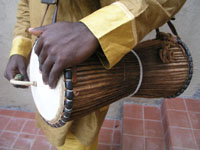
Omele Isaju listen to the sound of the Omele Isaju drum
-
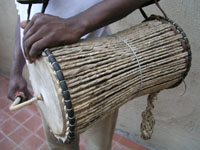
Omele Atele listen to the sound of the Omele Atele drum
-
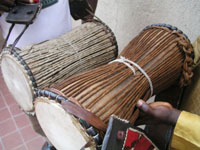
Omele Isaju & Omele Atele listen to the sound of the Omele Isaju & Omele Atele drum
-
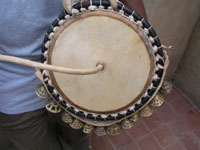
Iya ilu & opa (kongo)
-
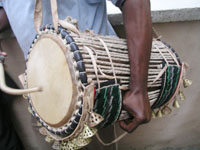
Iya ilu dundun listen to the sound of the Iya ilu dundun drum
-
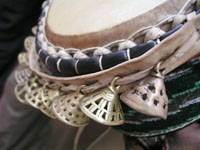
Saworo
-
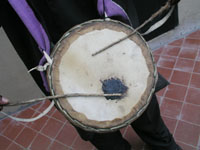
-
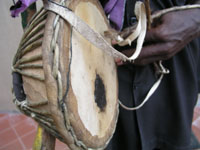
Gudugudu side view
-
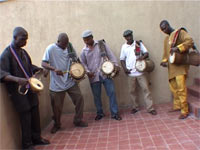
Dundun Ensemble listen to the sound of the Dundun Ensemble